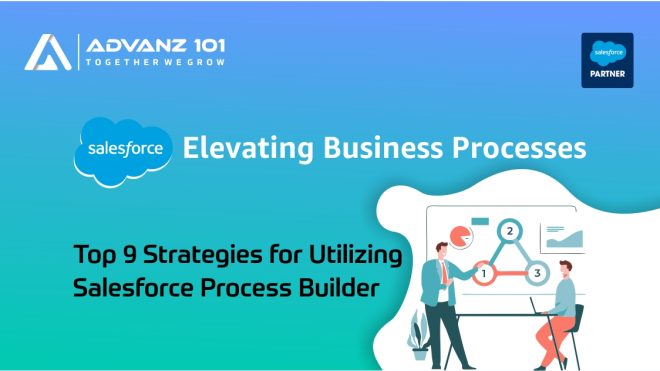Start with an insightful look into Salesforce, underscoring its role in reshaping business dynamics and enhancing customer interactions. For authoritative insights, visit [Salesforce’s website](https://www.salesforce.com).
– Introduce the Salesforce Process Builder as an essential instrument for streamlining complex business workflows, noting its rising adoption among leading global corporations.
Deep Dive into Salesforce Process Builder
– Explore the intricacies of Salesforce Process Builder, its features, and its pivotal role in advancing workflow automation. For comprehensive understanding, check out the [Salesforce Process Builder guide]
(https://trailhead.salesforce.com/en/content/learn/modules/business_process_automation).
– Highlight how Process Builder surpasses traditional workflow tools, supported by efficiency improvement statistics from Salesforce’s [annual reports]
(https://www.salesforce.com/company/news-press/press-releases/).
1. The Art of Strategic Planning
– Stress the importance of strategic planning, referencing a [Salesforce study](https://www.salesforce.com/resources/research-reports/state-of-sales/) that links well-orchestrated automation to a 30% increase in sales productivity.
– Share best practices for outlining business processes, drawing on Salesforce’s [planning resources](https://www.salesforce.com/products/platform/best-practices/).
2. Customizing Workflows with Salesforce Process Builder
– Delve into the customization potential of Process Builder, illustrated by [Salesforce customer success stories](https://www.salesforce.com/customer-success-stories/).
– Present case studies demonstrating how tailored workflows have enhanced business operations.
3. Performance Optimization
– Offer guidance on crafting efficient workflows, backed by Salesforce’s [performance optimization guides]
– Discuss striking a balance between complexity and performance, with expert insights.
4. The Importance of Testing and Quality Assurance
– Emphasize the vital role of testing, as outlined in Salesforce’s [testing best practices](https://trailhead.salesforce.com/content/learn/modules/apex_testing).
Provide a detailed approach for effective testing of Process Builder workflows.
5. Simplicity and Maintenance
Highlight the significance of keeping workflows straightforward, citing maintenance cost statistics from Salesforce’s [maintenance guide](https://help.salesforce.com/articleView?id=000334996&type=1&mode=1).
Offer advice on workflow upkeep, including periodic reviews and updates.
6. Utilizing Pre-Built Solutions
– Discuss the advantages of using Salesforce’s ready-made templates, accessible on the [AppExchange marketplace](https://appexchange.salesforce.com/).
– Share real-life examples of efficiency gains from these pre-built solutions.
7. Fostering Training and User Adoption
– Focus on training and adoption strategies, supported by a [Salesforce report](https://www.salesforce.com/form/pdf/2020-state-of-service-report.jsp) linking training to user satisfaction.
– Recommend effective training techniques available on [Salesforce Trailhead](https://trailhead.salesforce.com/).
8. The Need for Regular Audits
– Discuss the necessity of consistent audits, referencing Salesforce’s [audit guidelines](https://help.salesforce.com/articleView?id=000334996&type=1&mode=1).
– Share insights on aligning workflows with evolving business requirements.
9. Engaging with the Salesforce Community
– Accentuate the value of the Salesforce community, directing readers to the [Salesforce Community Forums](https://www.salesforce.com/community/).
– Encourage active participation in forums for ongoing learning and support.
Conclusion
– Conclude by recapping the essential strategies for optimizing Salesforce Process Builder.
– Motivate readers to delve deeper into Salesforce’s offerings, with a prompt to visit Salesforce’s [learning platform](https://trailhead.salesforce.com/) for more insights.


